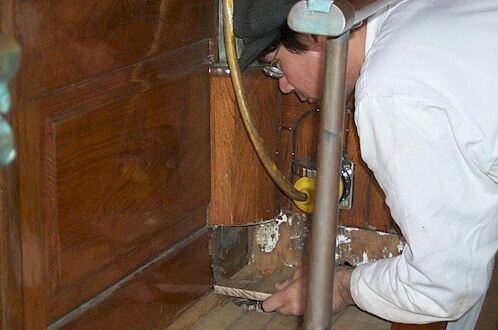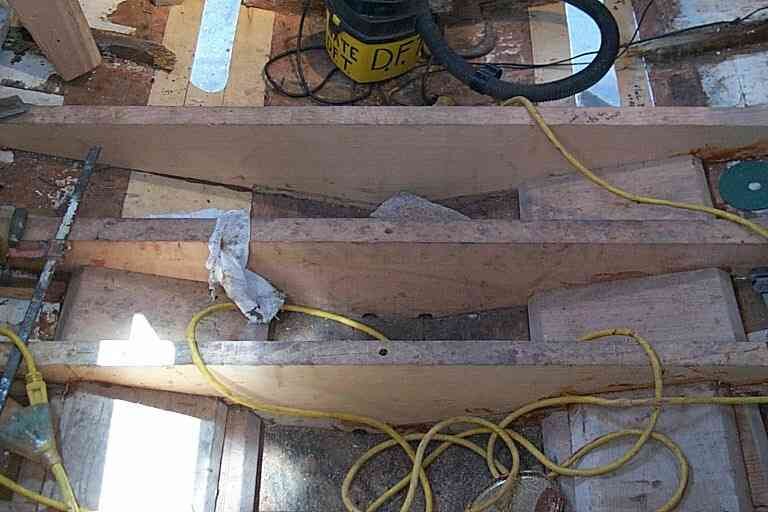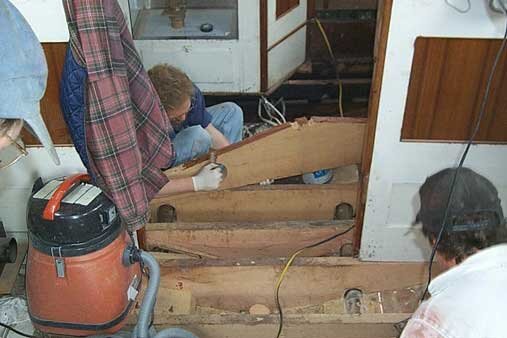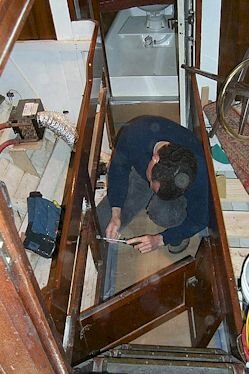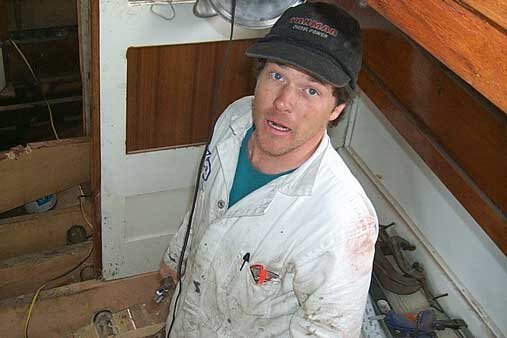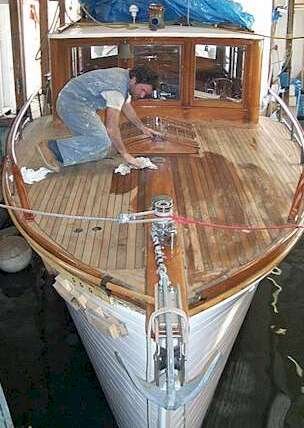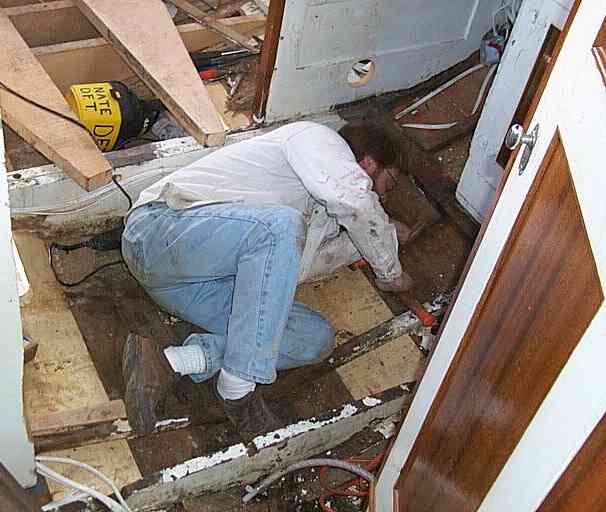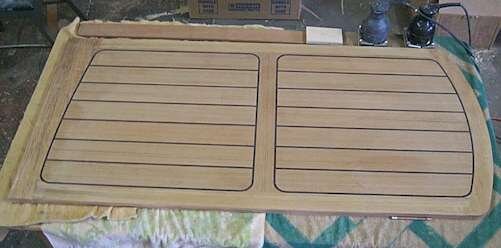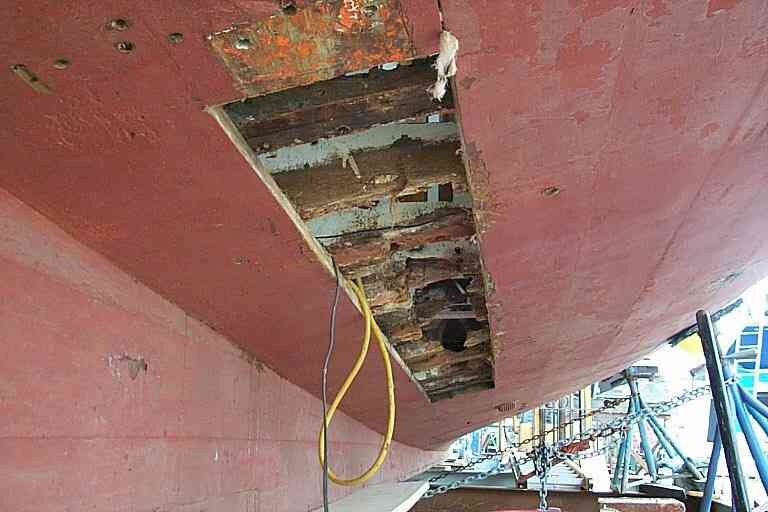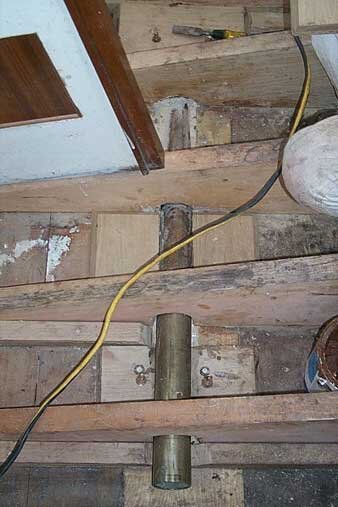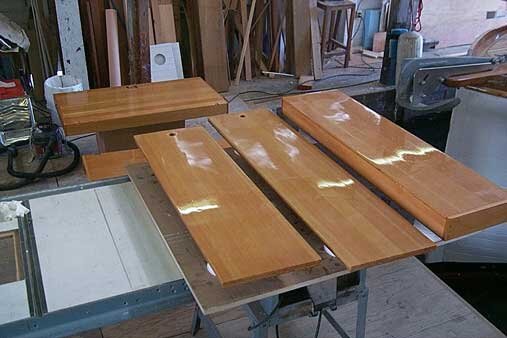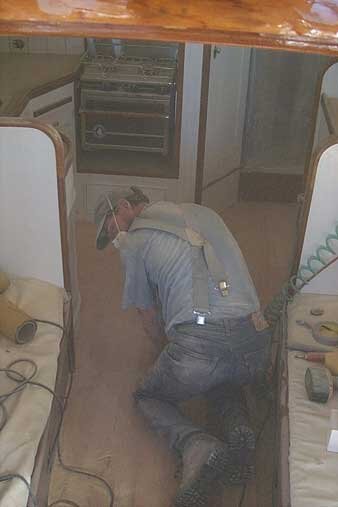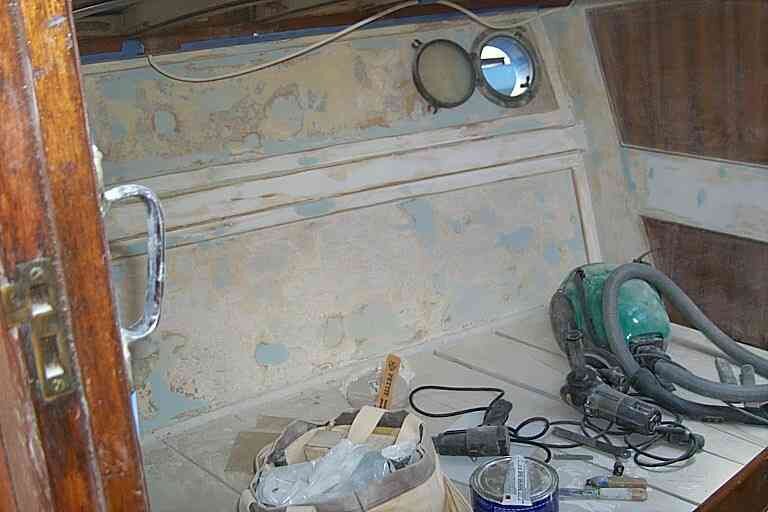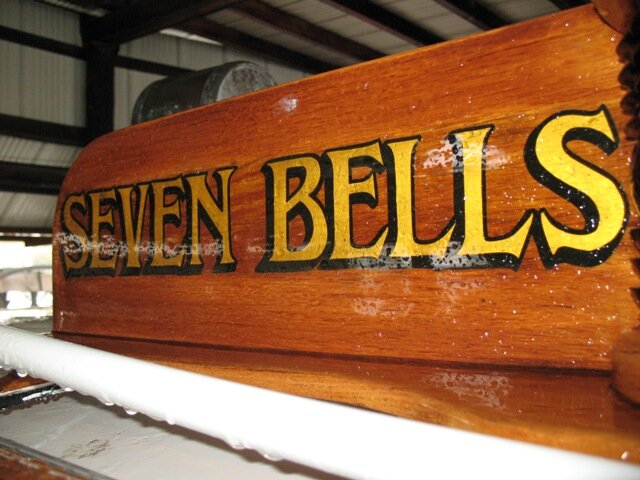Starting in late 1998, Seven Bells underwent a comprehensive restoration process that included refurbishing and renewing all of its mechanical, electrical, and plumbing, and navigation systems along with structural and cosmetic work to return the boat to its original beauty and functionality.
Before the work began...
In 1998, Seven Bells had been languishing for several years at a dock in San Rafael, California in San Francisco Bay when purchased by its current owner. The boat was in poor condition and a lot of work would be required to save the boat. No varnish had been applied in several years, and the previous owner had largely abandoned the boat to the elements. Fortunately, the engines would start, and the boat could be moved under its own power from San Rafael to Jeff Rutherford's Boat Shop in Richmond, CA. Seven Bells needed a lot of work. The boat was essentially sound though it needed a good deal of cosmetic work, plus extensive structural and mechanical repairs and renovation. Substantial wood in the hull and rear cockpit needed replacement.



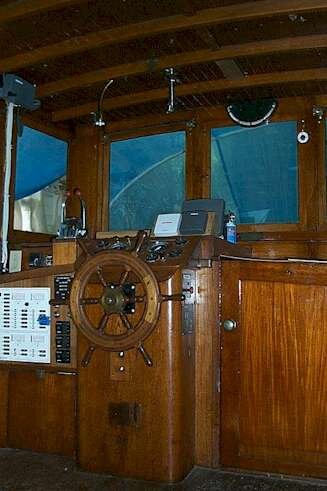






Rutherford’s Boatshop in Richmond, CA
Jeff Rutherford led the design and construction of a new hard dodger over the cockpit supervised substantial additional custom woodworking in the interior to make the boat's space more usable. Frederique Georges led a thorough sanding and varnishing of the brightwork, Anders Johansson of Swedish Marine in Richmond installed new electrical and electronics systems, and Michael Lord rehabilitated the engines and upgraded various mechanical systems.
In November-December, Frederique and Mampouya put on several coats of varnish, sanding lightly between each coat. Most of the carpentry and plumbing was completed, including rebuilding the head in the bow, removing the aft head to provide more storage space and light, and installing a radiator heating system. An especially challenging and rewarding job for Jeff was to build and install the hard dodger (the teak roof over the cockpit behind the rear cabin). Finally, Anders led the work of ripping out the old wiring and fixtures for complete replacement, and then beginning the installation of new electronics and steering systems (radar, sonar, autopilot, charting).
The major tasks in October were preparatory: removing all soft or rotten wood (including a virtually complete demolition of the aft cockpit; removing all the old electrical system -- wires, switchbox, lighting fixtures; removing the bonding system that had contributed to some wood damage near metal fittings; sanding the entire superstructure and brightwork down to light, fresh unfinished teak; repairing and replacing broken windows and window frames. Seven Bells was transported on a big flatbed truck from San Francisco to Seattle by Dennis Markin of Rio Linda Marina on December 17, 1998.
CSR Marine in Seattle, WA
The boat first had its bottom painted at CSR Marine before a Christmas launching on Lake Union. Spring 1999 in Seattle, Tim Ryan and Steve Vogel at CSR Marine on Lake Union then led the final stages of the restoration project.
The work at CSR included restoring the teak foredeck, laying new teak side decks over the badly deteriorated existing decks, and undertaking a major restoration of the interior -- especially the aft cabin and galley. In addition, Paul Grove installed a new high-powered alarm system to keep tabs on oil pressure, the raw water engine cooling system, the bilge pumps, and fire or smoke.
Steve Vogel, with help from Paul Life and others, rebuilt the cabinets, soles, floors, and overheads, and Frances began the painstaking process of applying several coats of varnish to the soles and aft cabinetry.
Tim Ryan fit the new dinghy, fresh from Seattle's Wooden Boat Shop, to the boat's newly reconditioned davits.
Tim Paull of MDM Upholstery, a premiere hotrod artist, worked to recreate the original leather diamond-upholstered cockpit cushions and the berth mattresses. Tom Stangeland, furniture-maker to the stars, built a new teak dining table for the aft cockpit. And then -- for his piece de resistance -- constructed a new top for the chart table using a technique of wood inlay known as marquetry. This project involved using an original 1929 blueprint for Seven Bells to create an image of the boat by fitting together jigsaw pieces of seven different kinds/colors of wood.
Frederique and Mampouya travelled to Seattle from San Francisco to spend weeks sanding, painting, and varnishing the walls, cabinets, berths, and ceilings in the fore and bridge cabins.
In the aft cabin and galley, Steve, John, Chris, Paul, Rick and others worked to replace rotten or cracked ribs on the hull, replace floor joists, rebuild the propeller shaft logs, and build new fir soles (floors).
Steve and James built new curved teak members at the places where the fore and side decks meet on both sides of the boat.
Frank Ford redid cabinets and hardware in the fore cabin, and rebuilt the settee in the bridge deck cabin. Michael sanded and faired the decks after Steve and others had repaired, prepared, and sealed them. The fore decks were routed, sanded, and recaulked, and new teak decking has been added to both sides.
Inside the cabins, the soles (floors) of all three cabins were replaced, new berths and cabinets were built, and the galley was refurbished and re-equipped.

